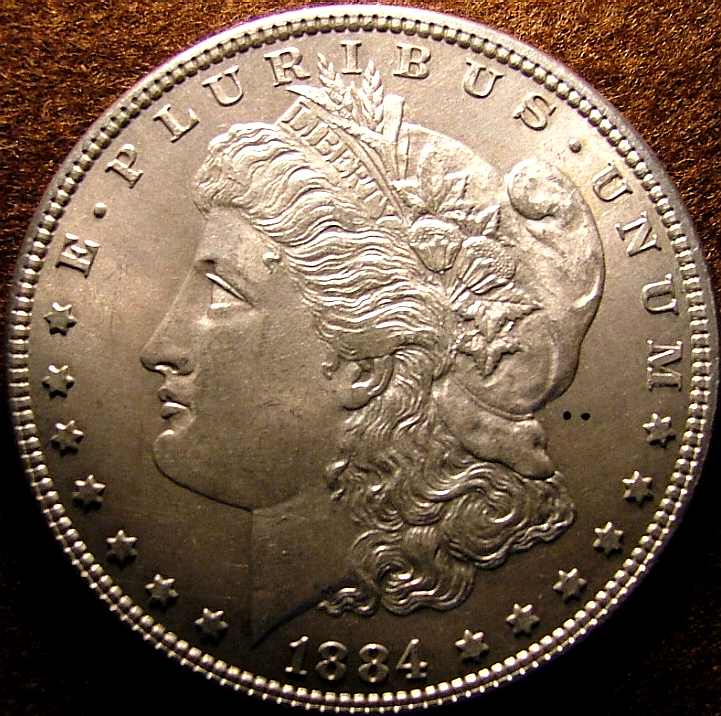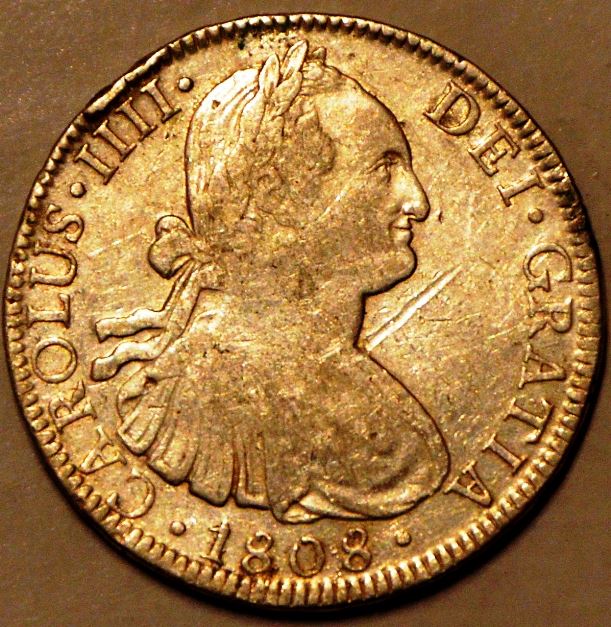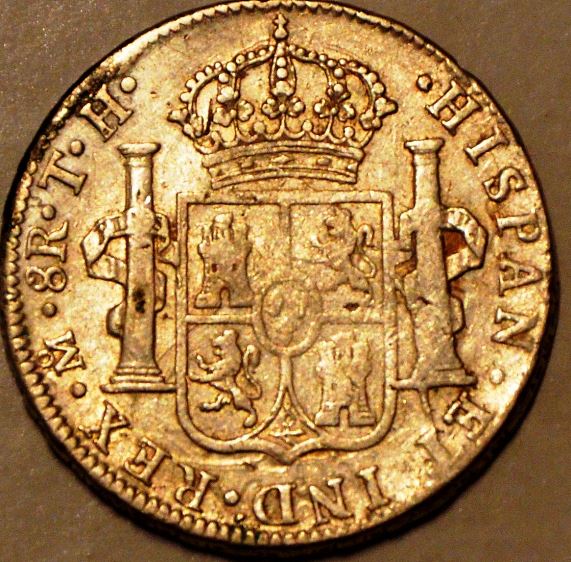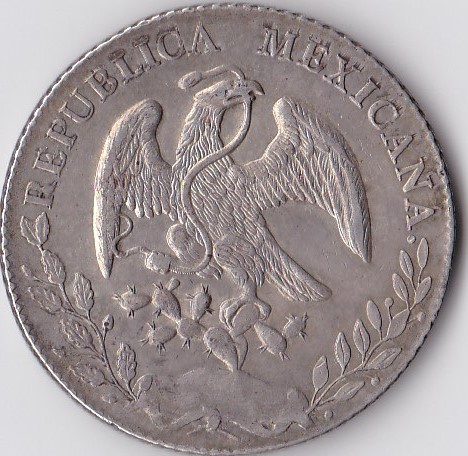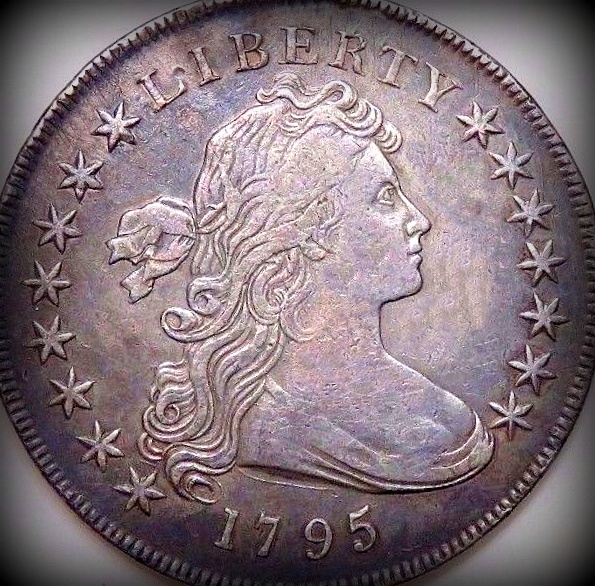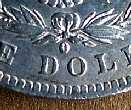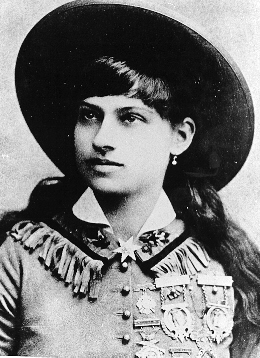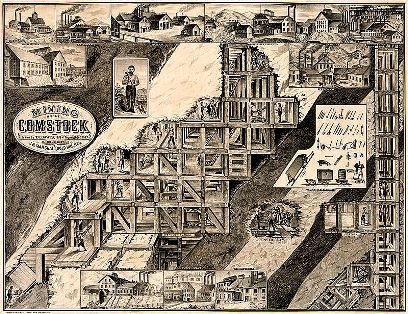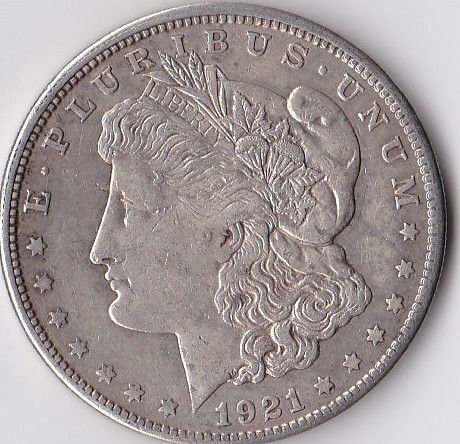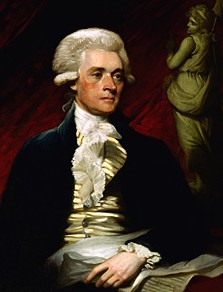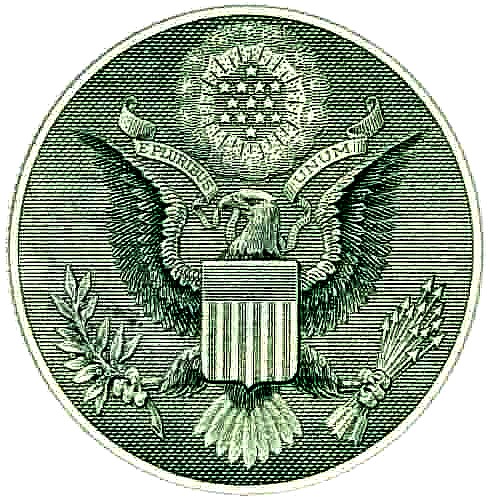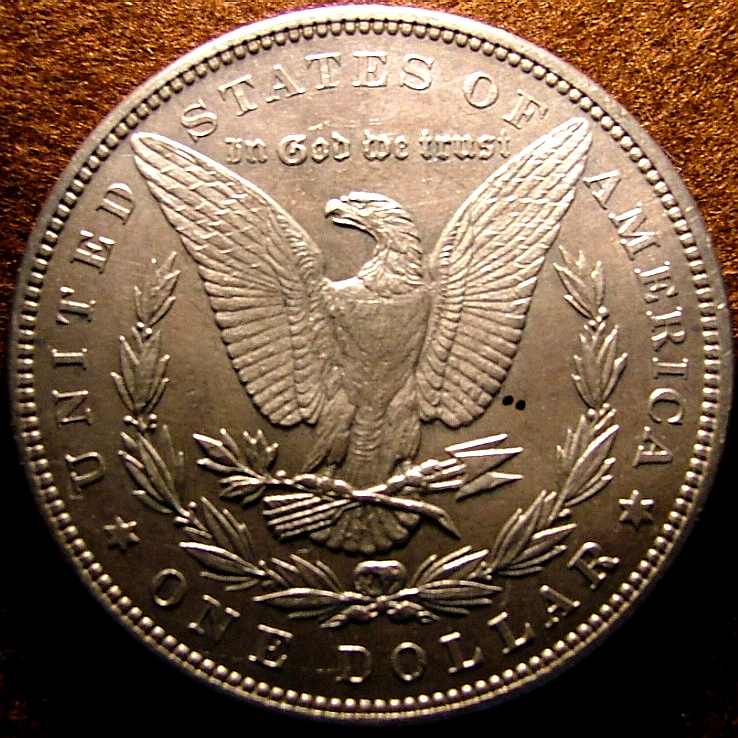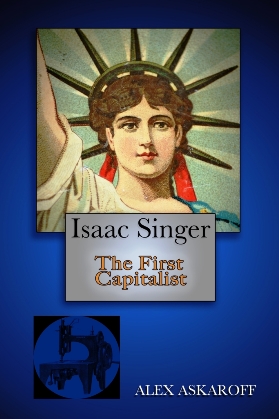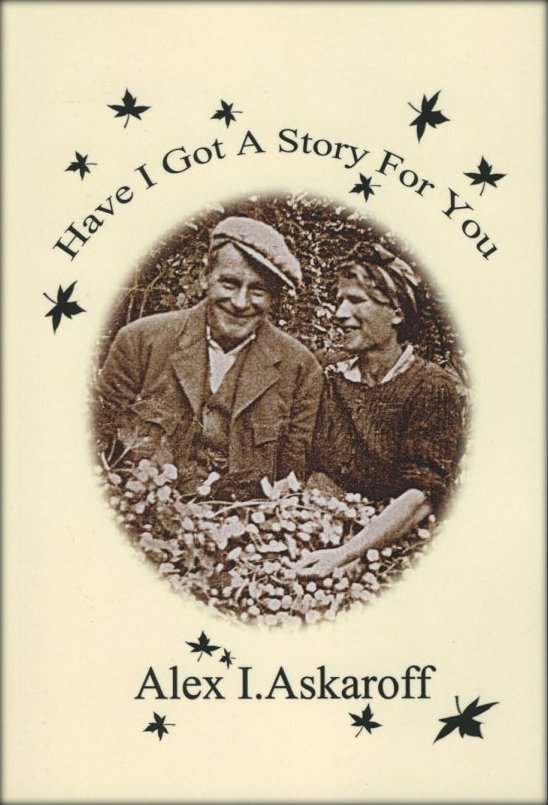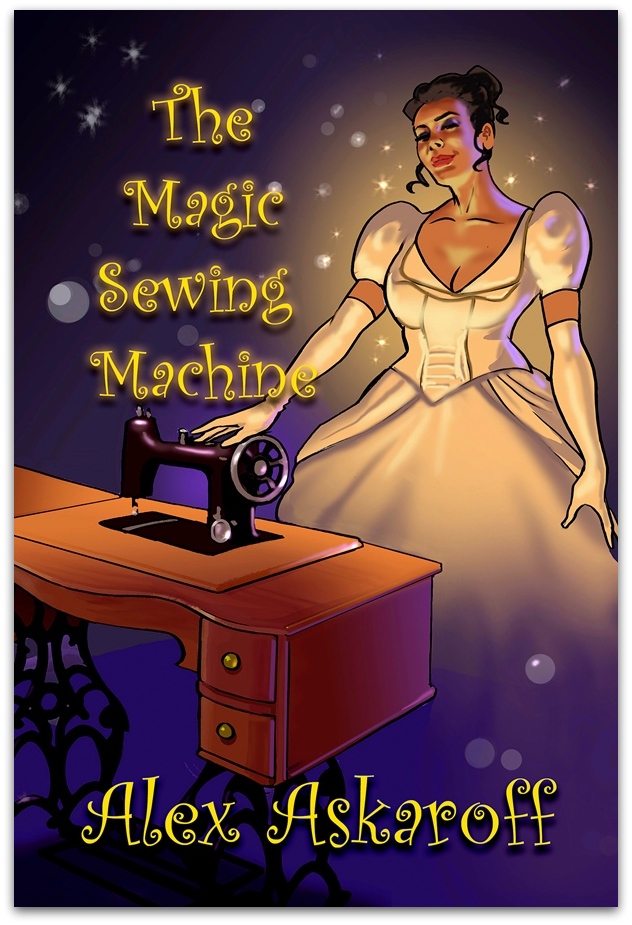|
|||
|
|
The Morgan Silver Dollar
By
My dad was an avid coin collector and like many collectors he could not afford the precious, rare or gold coins but he could afford the Morgan Silver Dollar. Dad had about 100 Morgan's and as a child I would watch him examine them with his large oak-handled magnifying glass. He would love the feel of the Morgan, the size and even the sound, yes the Morgan Silver Dollar has a great sound when flicked into the air or slid across a table, or spun. His enthusiasm has rubbed off on me and although I only have a handful of them they still have the ability to light up my eyes. This is a long and involved piece but well worth the journey. Put the kettle on, have a cup of tea, put your feet up and come with me to see what I have learned about this fabulous coin that holds a million legends. The origin of the American Silver Dollar The Morgan dollar, like all American dollars, evolved from the 8 Reales Spanish dollar. The American Silver Dollar is almost the same size and weight as the Spanish coin. Back in the later part of the 18th century the Spanish dollar was in wide use throughout the Americas. In fact it was used widely around the world and became the coin of legend, the famous pirate "Pieces of Eight". Now try training a parrot to say that and you are on your way to becoming a true pirate, getting a ship and crew may be slightly more difficult. The famous legend of George Washington throwing a Silver Dollar over the Potomac was probably in reality a Mexican minted Eight Reales Silver Dollar. Here is the Bourbon King Carolus 1111 (King Charles the fourth, 1748-1819) on the obverse (front face or head). Dei Gratia (By the Grace of God) on the reverse, back, bottom or tail side. HISPAN.ET.IND.REX (King of Spain and the Indies) M for the Mexico mint mark and 8R for Eight Reales and T.H for the assayers initials. The reverse is packed with information. In the centre (my coin is worn but you can just make them out) are three crosses of the Holy Trinity, the Father, The Son and The Holy Ghost. Central is the coat of arms, the crowned shield of The Castile of Leon and either side are the Pillars of Hercules. These refer to the two peninsular that flank the entrance to the Strait of Gibraltar. These pillars started to appear on Spanish coins after the Spanish first laid claim to the Indies and The Americas. The 8 reales dollar was used throughout the original 13 colonies as legal tender up until 1857 and until 1897 in Mexico.
It was the Spanish King Charles 1V who, unable to sustain his North American assets, agreed to cede Louisiana back to France in 1800. Possibly triggered by a single incident many years earlier by the loss of a bullion ship, the 64 gun brig or man'o'war, El Cazador in 1784. The sinking of El Cazador, along with its cargo of 450,000 silver coins, led to Spain being unable to satisfactorily support and sustain trade or commerce in their distant territories. Anyway in 1803, Napoleon, always eager to finance his domination of Europe, sold the enormous territory of Louisiana (now around 14 states and two Canadian provinces) to the expanding American colonies. In total President Thomas Jefferson paid $15 million for the Louisiana Purchase and in one spectacular swoop bought around 1,000,000 square miles of land, instantly doubling the size of the new nation for 3 cents an acre. $$$$$$$ Did you know: One last fascinating point before we move on. Look closely at the left pillar of Hercules on the Spanish coin, a ribbon is wrapped around it. Legend tells that this is where the American Dollar sign originated from. Amazing isn't it that the sign used by millions daily is from an ancient Greek God.
The Flowing Hair
Silver Dollar
The Coinage Act or Mint Act was passed by the US
Congress on April 2nd 1792. It created the United States Dollar as the
standard unit of American money and also authorized the production of
coins from silver. The Bust Dollar This image is the 1795 Bust Morgan Dollar. Half way through 1795 the mint switched to the Bust Dollar so for a period in 1795 both versions of dollar were made. The 'Flowing Hair' silver dollar 1794-1795
The first silver dollar to be minted in the U.S. was the 'Flowing Hair'
silver dollar and apparently just over 100 still survive to this day
(numbers are hard to verify). It is said that
Robert Scot (engraver for the United States Mint from 1793) made the
design modeled upon a French medal created by the French engraver
Augustin Dupre in 1782. The Flowing Hair Dollar
was only made from 1794 to 1795. The World's Most Valuable Coin Interestingly the Amon Carter (Amon Carter Sr, once ran the Fort Worth Star newspaper and owned the coin) silver dollar or Flowing Hair Silver Dollar, is said to be the first silver ever dollar to be minted in the U.S. It has an astounding value of over $10 million. It is still the world’s most valuable coin. Now let's get onto the best coin in the world and one that I can afford, The Morgan Silver Dollar.
The Morgan Dollar
Morgan
Dollar facts There can be few coins that have inspired more people than the Morgan Silver Dollar. It is common knowledge that it is one of the most widely collected coins in the world. Why? Read on and I will take you on a journey through its amazing history. let's get some of the essentials out of the way and then we can talk about the legends surrounding this unique coin. After the Coinage Act was passed in 1873 the silver dollar in circulation, known as The Seated Liberty Dollar, came to an end. No more silver dollars were minted until the Bland-Allison Act of 1878. In 1878 a superb new silver dollar hit the streets that became known as The Morgan Silver Dollar. It has become one of the most prized, traded and highly collected coins in the world. The great news with the Morgan Silver Dollar is that there is enough to go around from well-worn affordable specimens to uncirculated rare beauties so every coin collector has a Morgan or two. Now lets get down to business. On the Morgan Dollar the mintmarks appear underneath the tail feathers of the bald eagle on the reverse of the coin between the letters D and O in the spelling of dollar. Morgan Dollar mint marks Where were Morgan silver dollars minted? The five places that the Morgan Dollar were minted (four with mint marks) were, U S Mint,
Philadelphia (no mint mark) If the Morgan Dollar has no mark, blank, then it means the coin was minted in Philadelphia, Pennsylvania. Where is the mint mark on a Morgan silver dollar?
Of all of these mints, the dollars from Carson City (CC) seem to fetch more because of their low mintage and wild west connection.
Seven, Eight or
Twelve Tail Feathers Now going slightly off topic there has been lots of talk about the tail feathers of the American Bald Eagle. There are a myriad of minor differences in the Morgan Dollar from die varieties but the tail feathers are a subtle and interesting debate. Serious collectors of Morgan Dollars seek out these tiny differences which can affect the value tremendously. It is a fact that all normal America Bald Eagles have 12 tail feathers so why the discrepancy on some Morgan Silver Dollars. Some have seven some eight, the 1878 coins have seven while the first and later Morgan Dollars had eight. I have been told that at some period, someone in the mint suggested that all American Bald Eagles had an odd number of feathers! Not an easy thing to check on back then! Some say that the engravers Barber and Morgan wanted to facilitate more room for their engravings. We shall probably never know. Seven eagle feathers would also match the arrow feathers on the reverse. Instructions were given for the Morgan Dollar to be given an odd number of tail feathers. Director Linderman, always a stickler for detail, must have approved the changes. Apparently 50 dies were re-tooled but from March 1878 eight feathers ruled supreme (though some say old dies were still being used at other mints). Of course they were all wrong, only 12 is correct. Luckily no bald eagles were upset in the process...Now I can just see in my mind's eye collectors running for their coins (and glasses) to check what they have. Let's stick to some facts. All proofs for the Morgan series were minted at Philadelphia The coin is a masterpiece. It even has a beautiful ring when you flick it into the air and when you have a Morgan Dollar in your hand you know you have a real coin! I wonder if Buffalo Bill could really shoot a hole through one tossed into the air! Chuck a silver dollar on a table. It is one of the few coins that is impressive in both size, design and form. Every coin collector should have a few Morgan Silver Dollars in their collection. Coin Orientation One point to note is that the coins sides are opposite. Hold the coin between your thumb and forefinger and spin or turn it around horizontally (not flip it), you will notice that one side is upside down. I have been told that when the head of the 'obverse' and the top of the 'reverse' are on opposite sides it is known as 'coin orientation'. The reason is that when you flip it vertically or hold it between your thumb and forefinger and twist it vertically, the opposite side will still be the right way up. Weird but true however if you have another explanation please let me know as I have been dying to find out since my dad showed me when I was ten! alexsussex@aol.com George T Morgan We can easily see why the coin is so collectible when we look at Morgan's inspirational design. George T Morgan seemed to have made the perfect coin. George T Morgan was born in England in 1845 and worked for The Royal Mint before travelling to America and joining the U S Mint as an assistant engrave in 1876. Morgan had specific instructions on what to put on the coin as you will discover on your journey through its history. But it was the way he did it that was just so brilliant. Physically The Morgan Dollar and the 8 Reales Spanish dollar are large coins, both containing 26.7 grams of silver. The 8 Reales Spanish dollar is slightly thinner and slightly larger but there is no doubting the origin of The American Silver Dollar.
Did you know: old cowboys would drop a silver dollar into their canteens to keep the water pure? They did not know about the technical properties of silver but they sure knew it kept the water pure on long cattle drives. I wonder how many bags of silver dollars Jesse James and his gang stole in their lifetimes? How many did Doc Holiday or Wyatt Earp throw across a saloon table? How many did Annie Oakley shoot holes through? the Morgan Silver Dollar is an inspirational coin. Annie Oakley regularly shot holes through the Morgan Silver Dollar The Comstock Lode Okay let's get some fact out of the way. The Morgan Silver Dollar was authorized by the Bland-Allison Act of 1878. This act was passed to protect the American Treasury after a massive silver strike 20 years earlier. I bet them miners sure had a shindig when they struck silver! The mass of silver found was called the Comstock Lode and it was in Nevada. One of the many miners in the area called Pat McLaughlin sold his 1/6 interest in his Ophir claim to George Hearst. Pat soon lost his money and made a living doing odd jobs, dying penniless. Hearst however was made of sterner material, as was his son, newspaper magnate William Randolph Hearst. This mass of silver, the largest silver strike in history, had the effect of forcing silver prices down and damaging the economy. Some silver was lost in the 1857 tragedy when the SS Central America went down off the coast of Carolina in a hurricane with the cost of 425 lives. The ship was carrying over three tons of gold and silver from the California Gold Rush. The American Government's solution to silver surplus was perfect. Melt down tons of the mined silver bullion and make it into coins. A nice big heavy coin! The Treasury then stuffed the coins away in the Treasury Vaults, out of the way. That removed much of the silver strike from circulation and kept the silver prices artificially high, much like gold and diamonds are today. Did you know: silver is the best conductor of electricity known, even better than gold (until it tarnishes). Amazingly there were still bags of these perfect coins in the Treasury right up until the Beatle's era of the 1960's. They survived in stunning condition and are now really sought after. When were Morgan silver dollars minted? 1878 In 1878 John Tunstall, a Lincoln land owner and friend of John Chisom the cattle baron, was killed by a posse instructed to remove him by fair means or foul. It was the beginning the Lincoln County War where legends like Billy the Kid were made. It was also the year that the Morgan Dollar was first minted. Legend tells that when Pat Garrett shot Billy the Kid on 14 July 1881 a brand new 1881 silver dollar was found in his pocket. Did you know: The Morgan Silver Dollar was minted from 1878 until 1904.Then just once more in 1921.
The Pittman Act In 1904 silver bullion became scarce and minting stopped. However in 1921 it was minted for another year, why? It may have been due to the fact that during the First World War in 1918 The Pittman Act was passed and the Treasury melted down over 270 million silver dollars for their silver content. Wow!
To melt or not to
melt And it was not only the treasury. The Morgan Silver Dollar was over 90% pure American silver weighing in at a hefty 26.73g 900/1000 pure silver, 38.1mm diameter. Anyone needing a bit of silver for anything simply melted down as many Morgan Dollars as they needed to make or repair whatever they were doing from the handle of a silver tea pot to the spoons to stir the tea with. I have also been informed that the Southwestern Indians, particularly the Navajo Nation, would use silver dollars, to produce jewellery. They were melted down into "sand castings" where a piece of stone was carved into a pattern and pressed into the sand, then melted silver poured into the shape and left to cool. Once cool it was turned into bracelet, medallion, buckle or figurine. Many of the Concho belts made often had the image of the eagle or head of a lady. This was also a way to keep your wealth with you wherever you went. Now you can start to see why so many disappeared. It was only when their worth as coins outweighed their base silver value that people stopped melting them down. When silver prices went up more Morgan Silver Dollars were often dragged out of the dusty Treasury Vaults and melted down again for more bullion. Then the reverse would happen, silver would be made into coins when the economy changed. In this way the government could protect it assets and control silver prices in one swoop. The Morgan Dollar was possibly the only design they had ready for minting at that time, so more were minted for one year in 1921. Did you know: Apparently today less than one in five Morgan Dollars survive. Little did they know we would all start collecting the Morgan Dollars for their beauty and so many never went back into circulation. Did you know: The original design by Anthony de Francisci had an eagle breaking a sword rather than holding an olive branch. E Pluribus Unum Now let's look closely at Morgan's great and inspirational coin. He seemed to have got it perfect. He used the great American motto "E pluribus unum." This was one of the first national mottos of the United Sated of America and stems from the American Revolution, or the American War of Independence. Hey, anyone seen Last of the Mohicans with Daniel Day-Lewis and Madeline Stowe? Now that's a film. Although it is about independence it's a bit early for my coin now so we must get back to the story. The motto basically means "out of the many comes one." It comes from Great Seal, first designed by the Great Seal Committee of 1776. After many long discussions, John Adams, Ben Franklin, and others, along with Thomas Jefferson, (who had first suggested incorporating the Spanish eight reales dollar originally) agreed on the superb motto. This was approved by the Continental Congress for the Great Seal. The Motto was to signify the coming together of the many colonies and the diverse cultures of America into one great, united, country. Forged in the heat of war, the motto was perfect. Now add Madame Liberty to the coin and the thirteen stars to represent the 13 original colonies that had fought for independence against the British. Madame Liberty had represented freedom to many countries throughout history. Her bold features and flowing locks, her brand of liberty for all superbly summed up freedom. To choose a woman for the coin was inspired. Woman's ability to give birth not only to children but to new hope and a new nation was the perfect choice. Madame Liberty and the Statue of Liberty came to represent a new beginning to so many immigrants. What a sight when they first set eyes on the Statue of Liberty when arriving in America. Did you know: The Statue of liberty was modelled by Isabella Boyer, the last wife of Isaac Singer?
Now, add the date and you have one side of perfection. No matter how hard Morgan would try he could never get his coin better so he looked to the other side of his coin. Besides stating its value of one dollar and where it came from, The United States of America, what would finally clinch the perfect coin? The National emblem of the Great Bald Eagle of course. Hey we all knew that! But why the eagle, read on... The bald eagle In 1782 the bald eagle was adopted onto the National Seal as the emblem of the United States. The majestic bird represented a pure form of freedom, living as it does in the remote and clean mountain tops, fearing none, subject to no one.
The National Seal The seal shows the bird spread- eagle. On his breast a shield with the 13 perpendicular red and white stripes of the colonies, surmounted by a blue field with 13 stars. In his right talon the eagle holds a branch, in his left a bundle of thirteen arrows. However it was not until 1787 that the American eagle was officially adopted as the national emblem but that was just legalities.
The bird was here to stay, much to the annoyance of Ben Franklin who for some reason thought of the bird as having a low moral character! Get away they have never run off with anyone's wife that I know about! Did you know: It is said that Benjamin Franklin wanted to put a turkey on the coin as he felt that represented America better than the eagle. Luckily he never got his way. Of course the outstretched wings of the National Emblem, The Bald Eagle, was perfect. Like its predecessor, The Seated Liberty Dollar, the majestic master of the air clutches three not 13 arrows on the coin. I guess it may have looked a mess with all 13. If there is a reason for just three on the coins I am unaware of it. The international peace symbol, an olive branch, is also gripped in his powerful talons. So, is that why the eagle was used you keep asking? There is more, there is a legend! The legend of the bald eagle on the Morgan silver dollar The legend goes that the eagle became the national emblem because of a strange incident at one of the first battles of the Revolution. The battle started at daybreak, the gunfire and the noise of the fight woke the eagles high up in their nests near the mountain tops. They flew down to the battle and circled over the heads of the fighting men and shrieked at full voice. "They are calling for our freedom," cried the patriots as the battle raged. Encouraged by the eagles they fought on and although out-numbered by the British they won the day. Well that's the legend. It sounds good to me. Mind you in a battle I would not be looking skyward for too long! So there we have some reasons why the eagle is on Morgan's great coin. IN GOD WE TRUST
And one last motto, IN GOD WE TRUST. The first United States coin to bear this national motto, In God we trust, was the 1864 two-cent piece. It first appeared on U.S. currency on the back of Florida National Bank Notes in 1863. There was strong pressure on the treasury to add this statement onto the treasury money and why not, it is once again, the perfect motto. Morgan would have jumped at the idea. Fancy a final true legend, the reason In God We Trust was thought of? In God is our Trust appears in The Star-Spangled Banner which, as you all know, is the national anthem of the United States of America. So who really inspired America into using it?
The lyrics to the Star Spangled Banner
As a young man Francis witnessed the terrible bombardment of Fort McHenry in Baltimore, Maryland, by British ships in Chesapeake Bay during the War of 1812. He wrote the stirring anthem which is self explanatory when you read it. They say just before dawn to show defiance to the British ships the shredded and holed American flag was hoisted even higher. As dawn broke Francis was reduced to tears at the sight of his countries flag valiantly fluttering above the blasted ramparts. With true inspiration he wrote these famous lyrics which in 1931 officially became the American National Anthem. Oh, say can you see, by the dawn's early light,
The Anacreontic
Society Did you know: that the tune to America's National Anthem was written by a Gloucester (England) choir boy? John Stafford Smith sung in Gloucester Cathedral and grew into a gifted composer and wrote a rousing tune for his gentlemen's club in London. The Anacreontic Society used John's tune for many years before it became famous. Don't worry I had never heard of them either! I saw it on an old antiques show from Gloucester Cathedral. In God We Trust, inspired by In God is our Trust, appears between the outstretched wings of the great bird to finish off one of the most outstanding coins of all time. Well, that's it. Now you know some of the thought and effort that went into one of the most sought after and collected coins in the world you can appreciate it even more. If you have never held a Morgan Silver Dollar in your hands you are missing out on a piece of living history. Feel one, spin one, flick one into the air, listen to the sound it makes, it is brilliant. Go and buy one right now! Feel the weight and size. The Morgan Dollar is steeped in the Wild West like no other coin, stuck in the time of the outlaw and the cowboy, the untamed American wilderness and Native First Nation Indian. If you do buy one, get a nice worn one that has seen some life, that has been through pockets and bags, saloons and banks. One that Wyatt Earp may have bought a drink with before he went down to the O.K. Corral! Or one that Jesse James may have stolen on one of his daring robberies before his untimely death in 1882, (he was only 34). Fake Morgan Silver Dollars Beware fakes. I have no way of telling if this fake silver plated, brass Morgan Dollar in my collection was made in 1883 (as it is stamped) or 1983. Now that they are so sought after, fakes are out there! Buyer beware, fake Morgan Dollars are not easy to spot until the silver wears off. The best way I have found is to weigh them on jewellers scales. They are also sold as fakes on the Internet. I now have one with Donald Trump for a laugh!
Morgan Dollar
Official Weights & Sizes It is easy to see why the Morgan Silver Dollar has become part of the American legend and one of the popular coins to collect in the world. Did you know: E pluribus unum is also the Motto of Benfica football club in Lisbon. Did you know: E pluribus unum was originally a Latin term for a salad of several ingredients or simple meal, from the many-one! One final legend The Tombstone Mining & Milling Co In Tombstone, tales tell that most Morgan Silver Dollars, minted between 1880-1881, were from silver mined from the Good Enough Silver Mine in Tombstone Arizona. Silver was first discovered in the area by an Indian scout named Ed Schieffelin, long before a town existed. Ed was an enthusiastic wild man, taking risks few others, except crazy prospectors, would dare to do. He would scour the hills looking for silver and many of his friends told him that the only thing he would find in those rocks was Geronimo's spear in his guts or his own tombstone. Ed did not give up and his determination paid off with a huge silver strike, a vein of silver over fifty feet long. On 21 September 1877, Ed filed his claim and called his stake, you guessed it, Tombstone. Ed had the last laugh. Along with his brother, Al, and their partner Richard Gird, they formed The Tombstone Mining & Milling Co on a mesa called Goose Flats. Goose Flats soon became a tent town and was renamed Tombstone after the silver mine. Tombstone boomed into a typical rough shanty frontier town, attracting wild prospectors and cowboys alike. In a few years it had grown from a ranch town run by local cowboys into a boomtown with thousands of newcomers. Saloons, mining stores and hotels lined the ever growing streets. In 1870 on a dusty evening two wagons, silhouetted against the falling sun, were making a slow steady trail towards the town. A tall thin man with piercing blue eyes lifted his hat and shouted to his brothers, "We made it boys, all they way through Arizona territory, Cochise County and here we are, TOMBSTONE. Let's park these wagons up, find a hotel and have a drink. First round's on me." Both wagons picked up speed as Wyatt Earp and his eager brothers headed toward the edge of town. Wyatt licked his dry lips in anticipation as he urged his wagon on. At the O.K. Corral they set down their horses for the night, brushed the dessert dust from their clothes and headed for the lights and noise of the nearest saloon. The rest as they say, is burned into the pages of American folklore. How much is a Morgan silver dollar worth? Morgan dollars vary hugely in value from just a few dollars to many thousands of dollars. I suggest that you visit a few auction sites and look at the year of your coin and its condition then find a similar coin for sale at the time. That will give you the best guesstimate at the time. Crazy or what! I personally love the very worn Morgan dollars that have seen life, they have been thrown across saloon tables, used to buy food and pay for train fares or coach rides. They have seen real life touched real people. When you hold a well worn dollar it is only your imagination holding you back. Of course with uncirculated Morgan dollars we all know that they have seen very little of the outside world. So in the end the value of a Morgan Dollar is exactly what you are willing to pay for it. And that my friends is my final word on the most amazing Morgan Silver Dollar and just about everything that I have learnt from my dad and elsewhere over the last 50 years without too much techno blurb. Most of us know the name Singer but few are aware of his amazing life story, his rags to riches journey from a little runaway to one of the richest men of his age. The story of Isaac Merritt Singer will blow your mind, his wives and lovers his castles and palaces all built on the back of one of the greatest inventions of the 19th century. For the first time the most complete story of a forgotten giant is brought to you by Alex Askaroff. News Flash! Alex's books are now all available to download or buy as paperback on Amazon worldwide.
"This
may just be the best book I've ever read."
"My five grandchildren are
reading this book aloud to each other from my Kindle every Sunday.
The way it's written you can just imagine walking
beside him seeing the things he does. News Flash! Alex's books are now all available to download or buy as paperback on Amazon worldwide.
Alex has written extensively for trade magazines, radio, television, books and publications world wide.
Hi, Dear Alex Your most excellent article is quite informative. It is obvious that you did some extensive research. I also like your sprinkling of humor throughout the article. I am a collector of Morgan dollars, and I must agree that it is one of our most beautiful coins. You are to be commended for the fine article you have penned. Ward Ginn Great Falls, Virginia
Alex Great information Alex, thank you for sharing. JB
Hi Alex My dad was born in 1903 and sometime before the start of WWI, he and his family left Florida to drive to CA and see some of the sights, such as Yosemite National Park. This was done with the help of travel books since there were few maps available to the new sport of motor cars. Grandfather Will, Grandma and Daddy and his older brother, made it out west and I have photos of them camping in a tent. When they got out there, there wasn't much paper money, not sure if people didn't trust it or if it was just scarce but every time they got change they ended up with silver coins. Daddy said they had to tighten their belts to hold up their pants because they were going to fall down! M J Williams
Pat K, Montana USA
Best coin ever minted, brill page.
Hi Alex, Thanks for explaining so much it has made my Morgan's shine!!! DB Montana A big thank you Alex for all your
work here. I think I've learnt more in the last hour reading your blog
than in 20 years of collecting Morgans. Alex, I can't stop flicking and spinning my Morgan Dollars, what have you done to me... Curtis in the USA
|
||
|
Contact: alexsussex@aol.com |
|||
|
|
|||
|
|
|
|
|
|
|||
